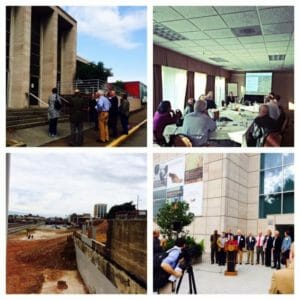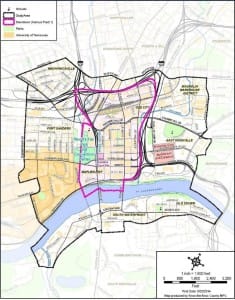Top Story
Date: October 5-10, 2014
Location: Knoxville, Tennessee
Sponsor:City of Knoxville
Subject Area: Downtown Revitalization and Redevelopment
Panel Chair: Leigh Ferguson
BACKGROUND AND PANEL ASSIGNMENT
Located in Knox County, the city of Knoxville is the 3rd largest city in Tennessee and comprises 104 square miles, or 20 percent of county’s total land area and is home to 21% of the county’s population—some 183,000 residents.
From 2000 to 2013, the population of the Knoxville metropolitan area grew by an estimated 14 percent, largely due to a number of factors including: a diverse economy, a temperate climate that attracts both working age and retired residents, overall quality of life and cost of living, and access to Great Smoky Mountains National Park, the country’s most visited national park. Both Knoxville and Knox County are major hubs for employment and commerce in the region, with major employers comprised of the health care/social assistance and retail trade sectors. Notable employers include the University of Tennessee (Knoxville), Oak Ridge National Labs, and the adjacent Great Smokey Mountain National Park.
Encompassing five specific sites— Henley Street/US Highway 441, the State Supreme Court Site, World’s Fair Park, 400 & 500 West Jackson Avenue, and the Knoxville Civic Auditorium & Coliseum, the core study area covers a great deal of Knoxville’s downtown area and includes a diverse set of land uses including, residential, recreational, civic and cultural and former warehouse uses, among other uses. The larger, contextual study area includes several surrounding neighborhoods, government, office, industrial uses, and public amenities.
 In an effort to ensure momentum, building off of previous successes to revitalize downtown, the panel was asked by the City of Knoxville to provide guidance on the following questions:
In an effort to ensure momentum, building off of previous successes to revitalize downtown, the panel was asked by the City of Knoxville to provide guidance on the following questions:
- How can Knoxville set the stage for future growth and development on the periphery of the downtown core?
- What are strategies to connect these resources to downtown and to each other?
- What are key, implementable steps to address development and connectivity issues in the short term?
SUMMARY OF RECOMMENDATIONS
The panel recommended many bold ideas, including the following overarching recommendations:
- Transform the Henley Street corridor by introducing on-street parking and activating the street with retail and a pedestrian friendly environment.
- Redevelop the State Supreme Court Site with active uses, such as a mixed use development with a performing arts component, and ensure that any future RFP clearly guide design and program mix
- Preserve the World’s Fair Park’s green space as amenity for current and future Knoxville residents and activate adjacent underutilized sites and additional infill sites with synergistic uses such as homes for existing cultural organizations seeking new space
- Relocate those existing uses currently at the Knoxville Civic Auditorium and Coliseum to Downtown and engage in a public master planning process to create and envision a vibrant, desirable, mixed-income community that includes diverse housing types and households
- Consider a phased, master developer approach to ensure successful and contextual redevelopment for 400 & 500 West Jackson Avenue
- Extend Knoxville’s greenway connection north from World’s Fair Park
Additional details about these recommendations can be found in the presentation and a final report that will be posted once complete.